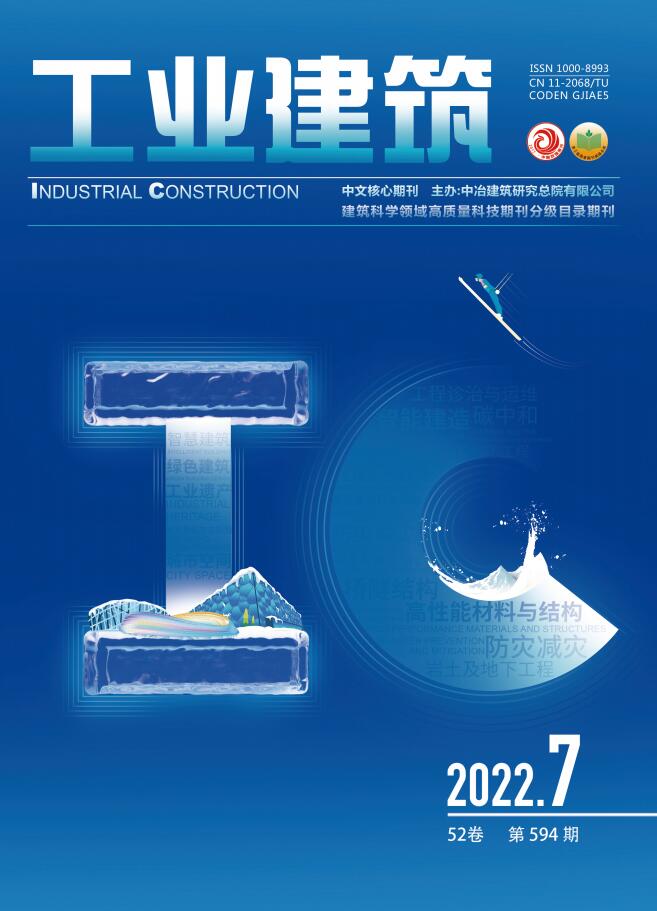| [1] |
黄新波, 胡潇文, 朱永灿, 等. 基于卷积神经网络算法的高压断路器故障诊断[J]. 电力自动化设备, 2018, 38(5):136-140.
|
| [2] |
吴春志, 江鹏程, 冯辅周, 等. 基于一维卷积神经网络的齿轮箱故障诊断[J]. 振动与冲击, 2018, 37(22):51-56.
|
| [3] |
王丽华, 谢阳阳, 周子贤, 等. 基于卷积神经网络的异步电机故障诊断[J]. 振动、测试与诊断, 2017, 37(6):1208-1215.
|
| [4] |
李雪松, 马宏伟, 林逸洲. 基于卷积神经网络的结构损伤识别[J]. 振动与冲击, 2019, 38(1):159-167.
|
| [5] |
ZHANG Y, MIYAMORI Y, MIKAMI S, et al. Vibration-based structural state identification by a 1-Dimensional convolutional neural network[J]. Computer-Aided Civil and Infrastructure Engineering, 2019, 34(9):822-839.
|
| [6] |
李书进, 赵源, 孔凡, 等. 卷积神经网络在结构损伤诊断中的应用[J]. 建筑科学与工程学报, 2020, 37(6):29-37.
|
| [7] |
GU J, WANG Z, KUEN J, et al. Recent advances in convolutional neural networks[J]. Pattern Recognition, 2018, 77:354-377.
|
| [8] |
胡卫兵, 杨佳, 王龙, 等. 基于层合理论和误差反向传播神经网络的古建筑木结构损伤识别和量化研究[J]. 工业建筑, 2020, 50(11):71-77.
|
| [9] |
朱宏平, 张源. 基于自适应BP神经网络的结构损伤检测[J]. 力学学报, 2003, 35(1):110-116.
|
| [10] |
YU D, DENG L. Deep Learning and its applications to signal and information processing[J]. IEEE Signal Processing Magazine, 2011, 28(1):145-154.
|
| [11] |
KRIZHEVSKY A, SUTSKEVER I, HINTON G. ImageNet classification with deep convolutional neural networks[J]. Communications of the ACM, 2017, 60(6):84-90.
|
| [12] |
REHMER A, KROLL A. On the vanishing and exploding gradient problem in gated recurrent units[J]. IFAC Papersonline, 2020, 53(2):1243-1248.
|
| [13] |
HADSELL R, RAO D, RUSU A A, et al. Embracing change:continual learning in deep neural networks[J]. Trends in Cognitive Sciences, 2020, 24(12):1028-1040.
|
| [14] |
LAAVANYA M, VIJAYARAGHAVAN V. Residual learning of transfer-learned AlexNet for image denoising[J]. IEIE Transactions on Smart Processing & Computing, 2020, 9(2):135-141.
|
| [15] |
HUBEL D H, WIESEL T N. Receptive fields, binocular interaction and functional architecture in the cat's visual cortex[J]. The Journal of Physiology, 1962, 160(1):106-154.
|
| [16] |
GHOSH A, KUMAR H, SASTRY P. Robust loss functions under label noise for deep neural networks[C]//AAAI. 31st AAAI Conference on Artificial Intelligence. Palo Alto:2017:1919-1925.
|
| [17] |
VEIT A, WILBER M J, BELONGIE S. Residual networks behave like ensembles of relatively shallow networks[J]. Advances in Neural Information Processing Systems, 2016, 29:550-558.
|
| [18] |
董聪, 丁辉, 高嵩. 结构损伤识别和定位的基本原理与方法[J]. 中国铁道科学, 1999, 20(3):89-94.
|
| [19] |
KIM J T, RYU Y S, CHO H M, et al. Damage identification in beam-type structures:frequency-based method vs mode-shape-based method[J]. Engineering Structures, 2003, 25:57-67.
|
| [20] |
HE K, ZHANG X, REN S, et al. Delving deep into rectifiers:surpassing human-level performance on ImageNet classification[C]//IEEE. International Conference on Computer Vision. New York:2015:1026-1034.
|
| [21] |
MANCEV D, TODOROVIC B. A primal sub-gradient method for structured classification with the averaged sum loss[J]. International Journal of Applied Mathematics & Computer Science, 2014, 24(4):917-930.
|


 Login
Login Register
Register E-alert
E-alert







 DownLoad:
DownLoad: